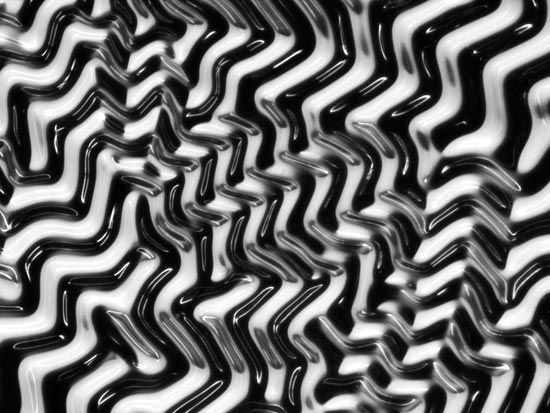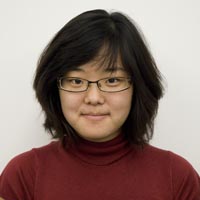Science photo takes second in national contest
With a photograph that embodies the unexpected — and sometimes breathtaking — outcomes of science, University of Wisconsin–Madison graduate student Jenna Eun has won second place in the 2008 Science and Engineering Visualization Challenge, sponsored by the National Science Foundation and Science magazine.

This beautiful pattern of wrinkles unexpectedly arose after University of Wisconsin–Madison biochemistry graduate student Jenna Eun grafted a small sheet of water-loving “hydrogel” onto the top of another material and added water. While the hydrogel absorbed the liquid and expanded, the underlying material did not, putting strain on the hydrogel and causing it to buckle. Eun’s photograph, taken under a microscope, won second place in the 2008 Science and Engineering Visualization Challenge and appeared in the Sept. 26, 2008 issue of Science magazine.
Photo: Jenna Eun
The image, “Polymazing,” appears in the Sept. 26 issue of Science, which Eun herself finds somewhat amazing, considering the subject of her photo arose completely by accident. “I thought something was wrong,” laughs Eun, who works with biochemistry professor, Doug Weibel.
Last spring, Eun grafted a thin sheet of water-loving “hydrogel” onto a material called PDMS, thinking the combination might improve the function of a tiny cell culture system she was building. But when she added water, something surprising happened: While the hydrogel absorbed the liquid and expanded, the PDMS stayed in place, putting strain on the hydrogel and causing it to buckle.

Eun
Fearing her technique hadn’t worked, she showed the strange pattern of wrinkles to Weibel.
“And he said, ‘That’s actually really pretty, why don’t you take a picture?'” recalls Eun.
But the image, which was taken under a microscope, isn’t merely pretty. The physical phenomenon responsible for the buckling is well-studied and emerges in many places in nature, Eun says. Our fingertips get crinkly in the bathtub, for example, because the flexible epidermis swells with water, while the underlying tissue it’s attached to does not, causing the skin to wrinkle.
According to the competition’s Web site, NSF and Science hold the annual challenge to “celebrate the grand tradition” of images and illustration in scientific research. Doing well in the contest is now becoming something of a tradition for Weibel. While at Harvard University, he contributed to an entry called “Tiny Metal Pathways” that won second place in last year’s competition
Tags: biosciences, learning, student awards




